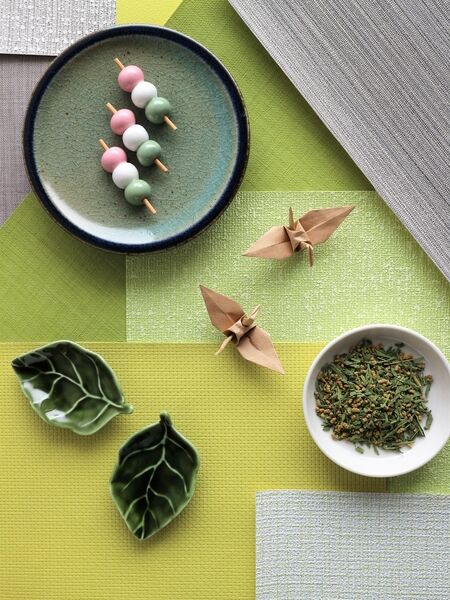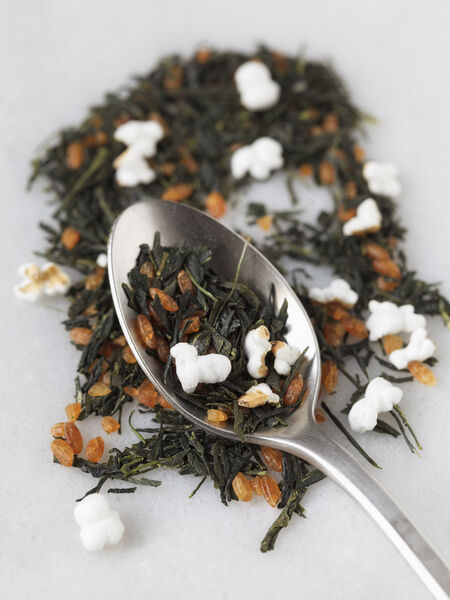Genmaicha: Japan’s Toasted Rice Green Tea


Hello again, TeaMuse readers. I'm back today with the second installment of a new series focusing on Japanese Teas, the history behind them, how they are produced, and the best ways to drink them. Today we’re going to look at Genmaicha.
History
When it comes to the History of Genmaicha, there are many different tales and legends that talk of how and why this tea was created.
The first dates all the way back to 15th century Japan, where it is said that Genmaicha was created by a samurai and his servant. The story suggests that the servant was preparing tea for his master and at the time tea was very expensive. As he poured the tea it is said that a few grains of rice fell from his sleeve and landed in the tea and thus created Genmaicha.
Another story credits the creation of Genmaicha to housewives from around the same time period who mixed cheap brown rice into small amounts of expensive green tea so that common folk could have the opportunity to enjoy it.
The most realistic of them all however is, in my opinion, that this method was introduced in the 1900s to enable people to still enjoy good tea throughout times of hardship. My favorite of these stories is definitely the 1st, teas that have legends of old behind them alway intrigue me to no end.
Production
Traditionally, Genmaicha is created using Bancha, a green tea from later harvests that is usually a little more affordable than a higher grade Sencha or Gyokuro and contributed to its reputation of being a cheaper tea in the past. However these days Genmaicha is made using many superior quality teas like Sencha. Adagio's Masters Teas' Shincha Genmaicha uses Sencha for their blend as well as Adagio.
Others use Gyokuro and Hojicha, and you can even find Genmaicha infused with Matcha which helps to enhance that green tea and does affect the mouthfeel quite a bit.
The roasted rice (Genmai) is usually added to whichever tea chosen at a ratio of 1:1, but that definitely varies from company to company. The reason brown rice is used instead of white rice for this blend is because brown rice is not as fragrant when it’s roasted and tends to roast to a much darker color.
The traditional way to make this tea uses Mochi rice and you will most often find that the highest quality Genmaicha blends only use Mochi rice. Others tend to be a mix of Mochi and other rice, and some extremely low quality Genamicha’s tend to use actual popcorn in their blends in place of the rice, I do not recommend that you try those ones though, nobody needs that experience. Stick with Adagio or Masters Teas to ensure your popped pieces are rice!
The rice goes through 5 steps in its roasting process including soaking in water, steaming, drying using hot air, roasting and then of course cooling. It’s actually quite easy to do at home and I recommend trying popping rice at least once, I guarantee you’ll be shocked by the results.
Preparation
The best way to prepare it - tea is a very personal thing so of course you can prepare it however you want to, but when it comes to traditional teas I like to make sure that I use the traditional teaware used to prepare them from their places of origin. For Genmaicha I will almost always use a Kyusu.
The Kyusu is made especially for the brewing of green teas and gives the leaves a fantastic amount of space to open up and release their flavor into the water. You can find Kyusu’s made out of various different materials but I highly recommend a clay Kyusu, as the clay itself can accentuate the flavours of the tea.
If you are a beginner to using a Kyusu I recommend buying a bigger one to start off with while you get used to the stronger flavors of the tea and then move onto a smaller Kyusu once you are used to the flavors and want a more concentrated flavor from your tea. If you have lots of Genmaicha of varying quality levels I would suggest brewing the higher quality ones (like Masters Teas Shincha Genmaicha) in a Kyusu and the lower quality ones western style mostly because lower quality ones wont hold as well to concentrated steeps.
I like to add a teaspoon and a half of tea for each cup to my Kyusu, steep it for 30 seconds and use 85 degree celsius water. Doing short and fast steps enables me to make the tea last quite a while and really get the most out of what it has to offer. It’s definitely worth experimenting with what works best for you when it comes to steeping though as everyone has different tastes and enjoys different things.
I really hope you have all enjoyed reading this series so far. There will definitely be plenty more of these posts coming in the future, I can’t wait to share more of my knowledge with you all and learn more myself in the process.
